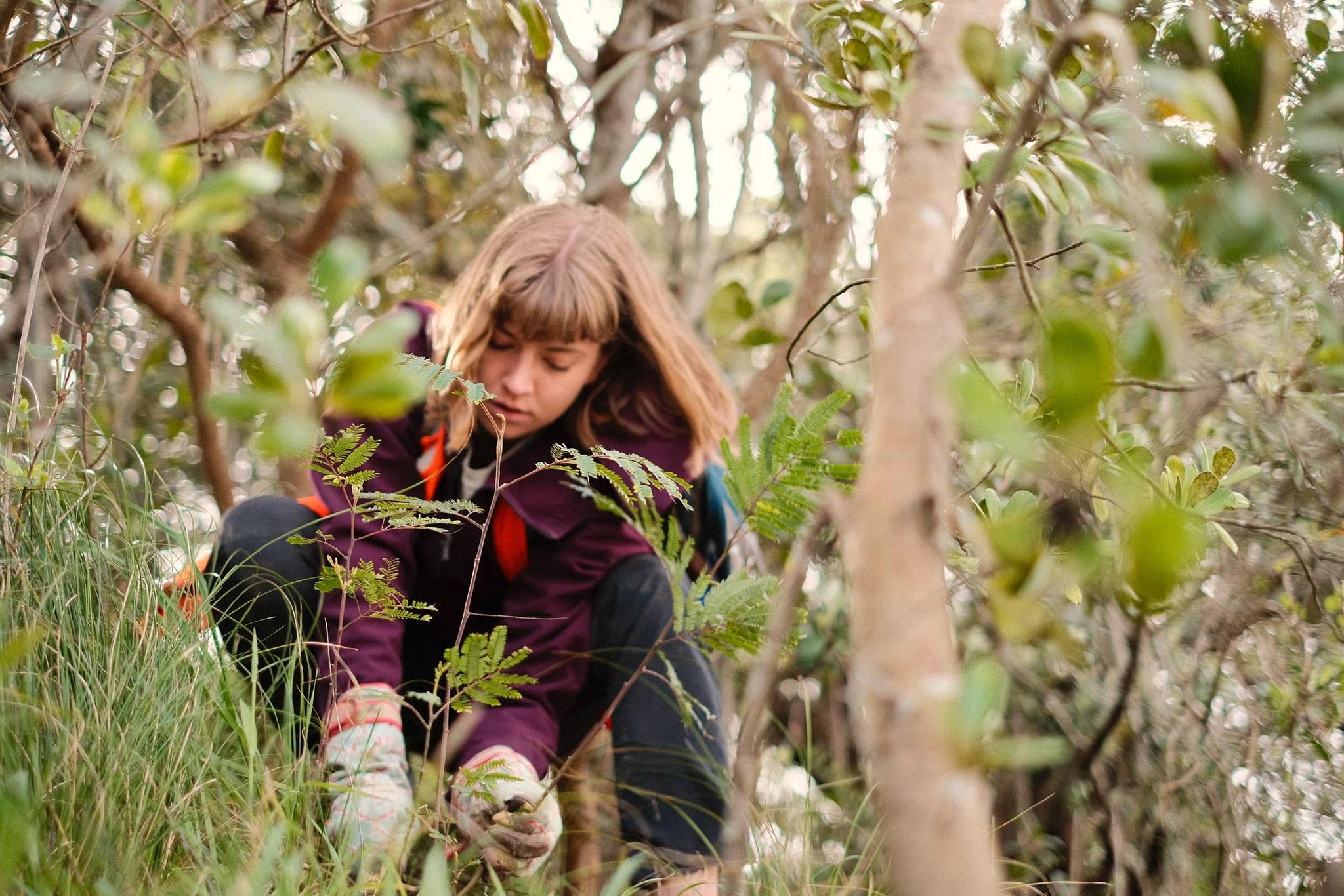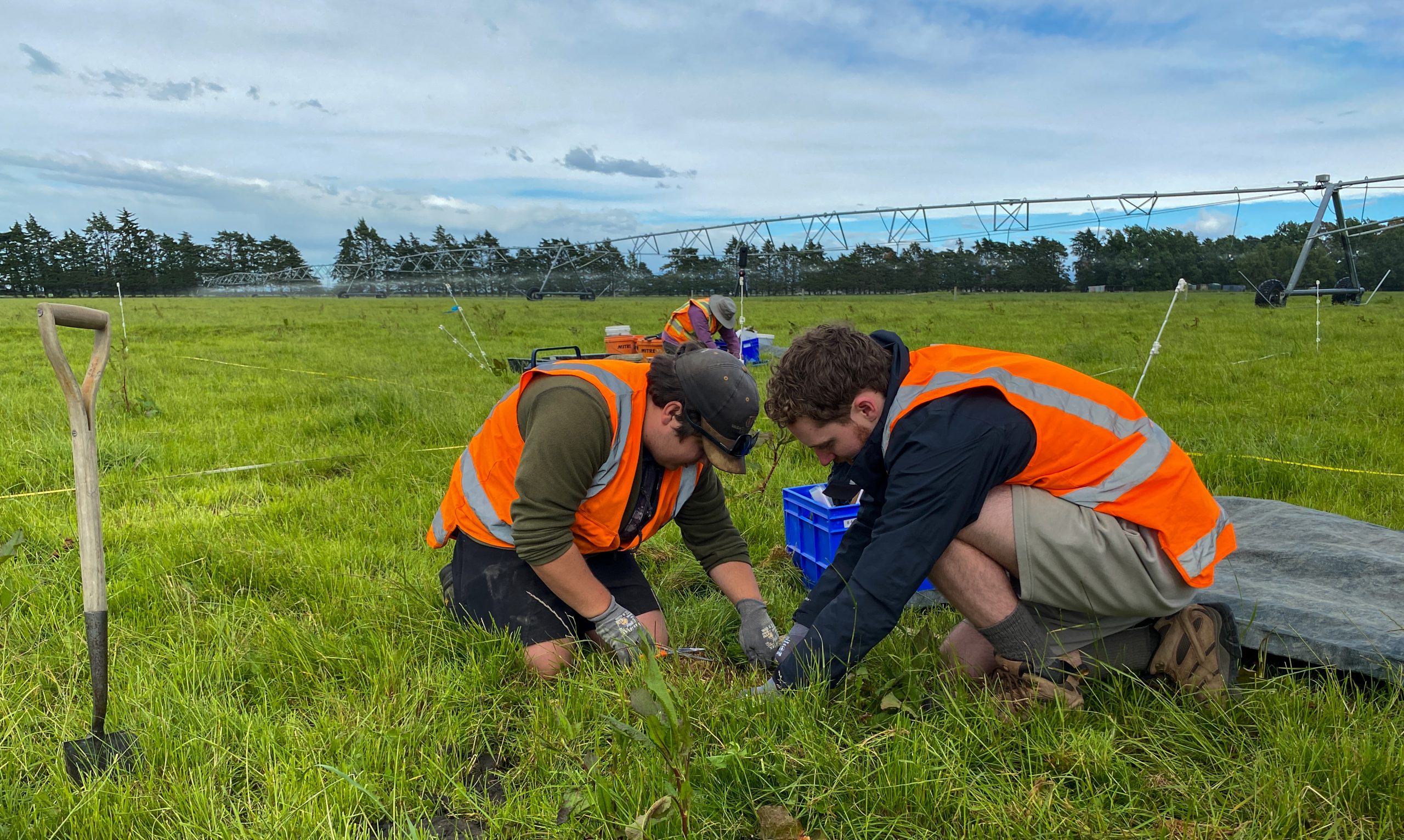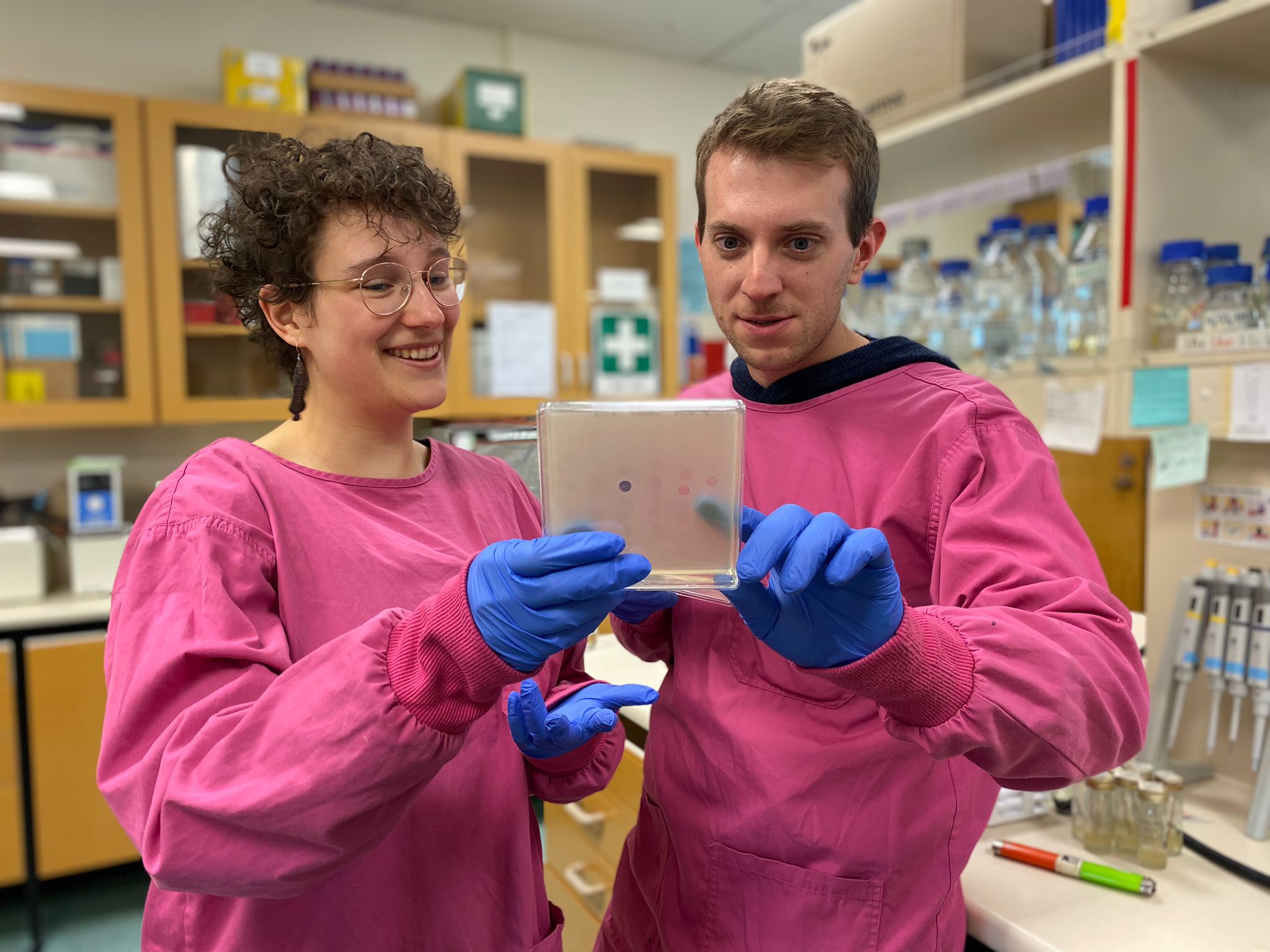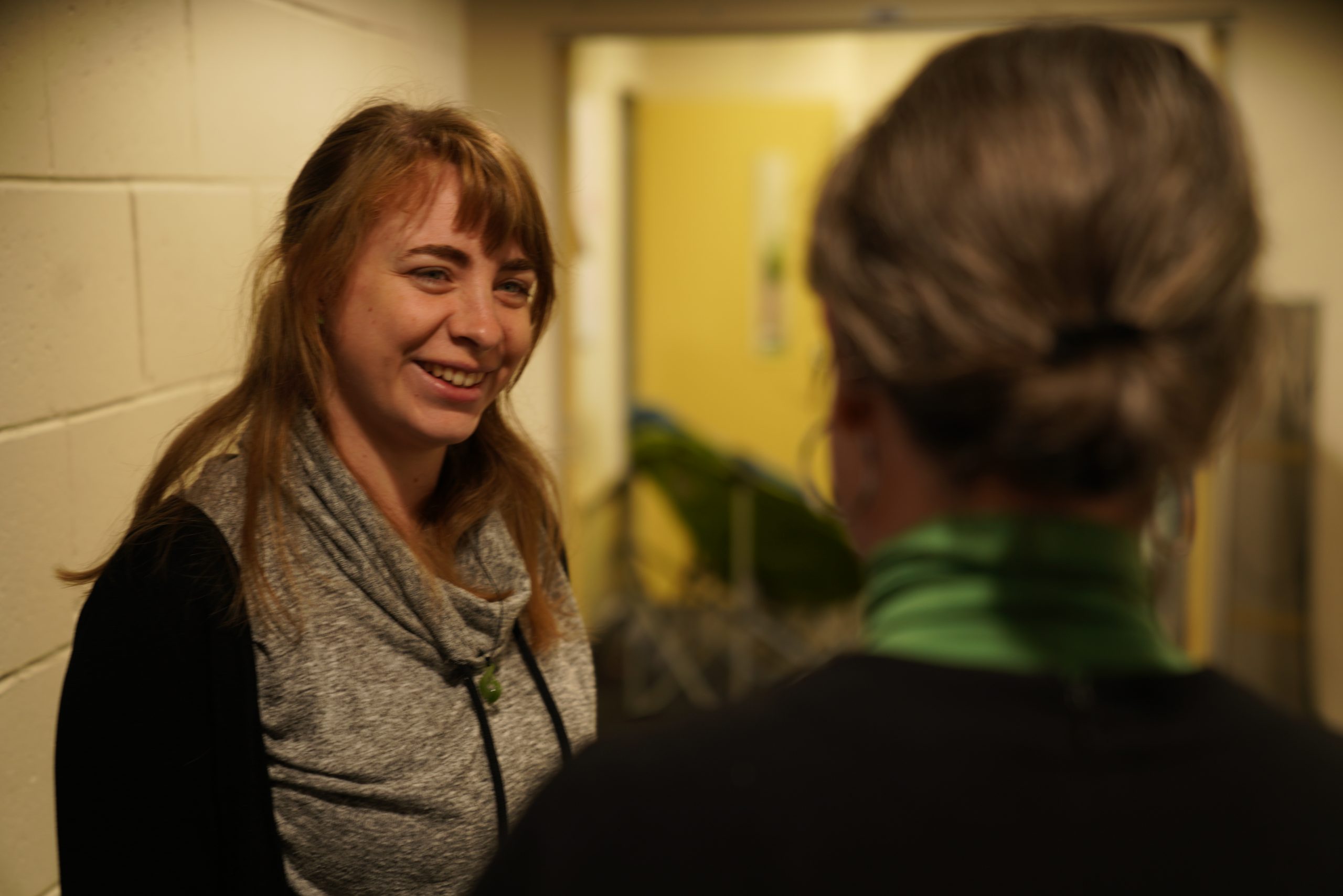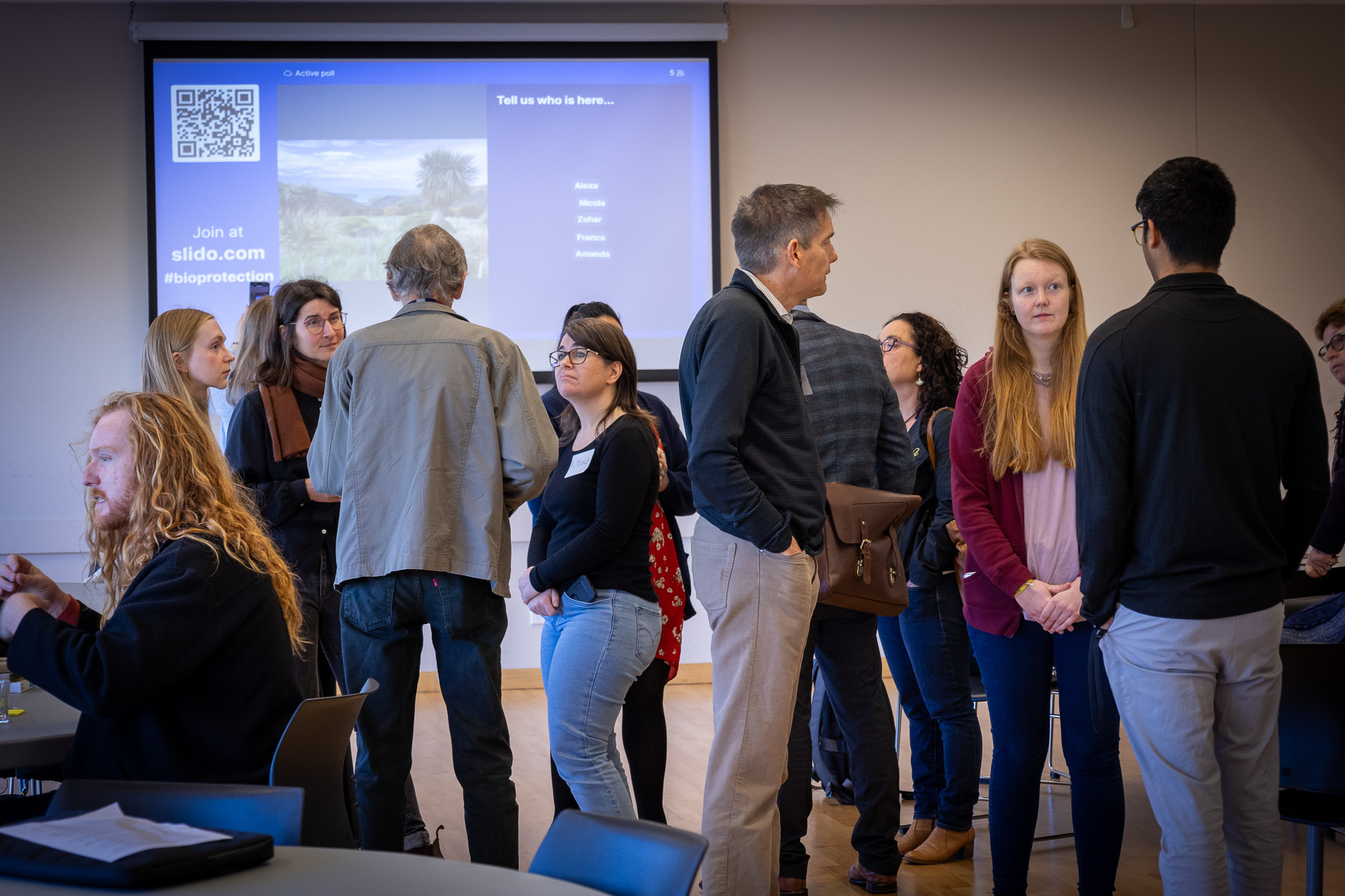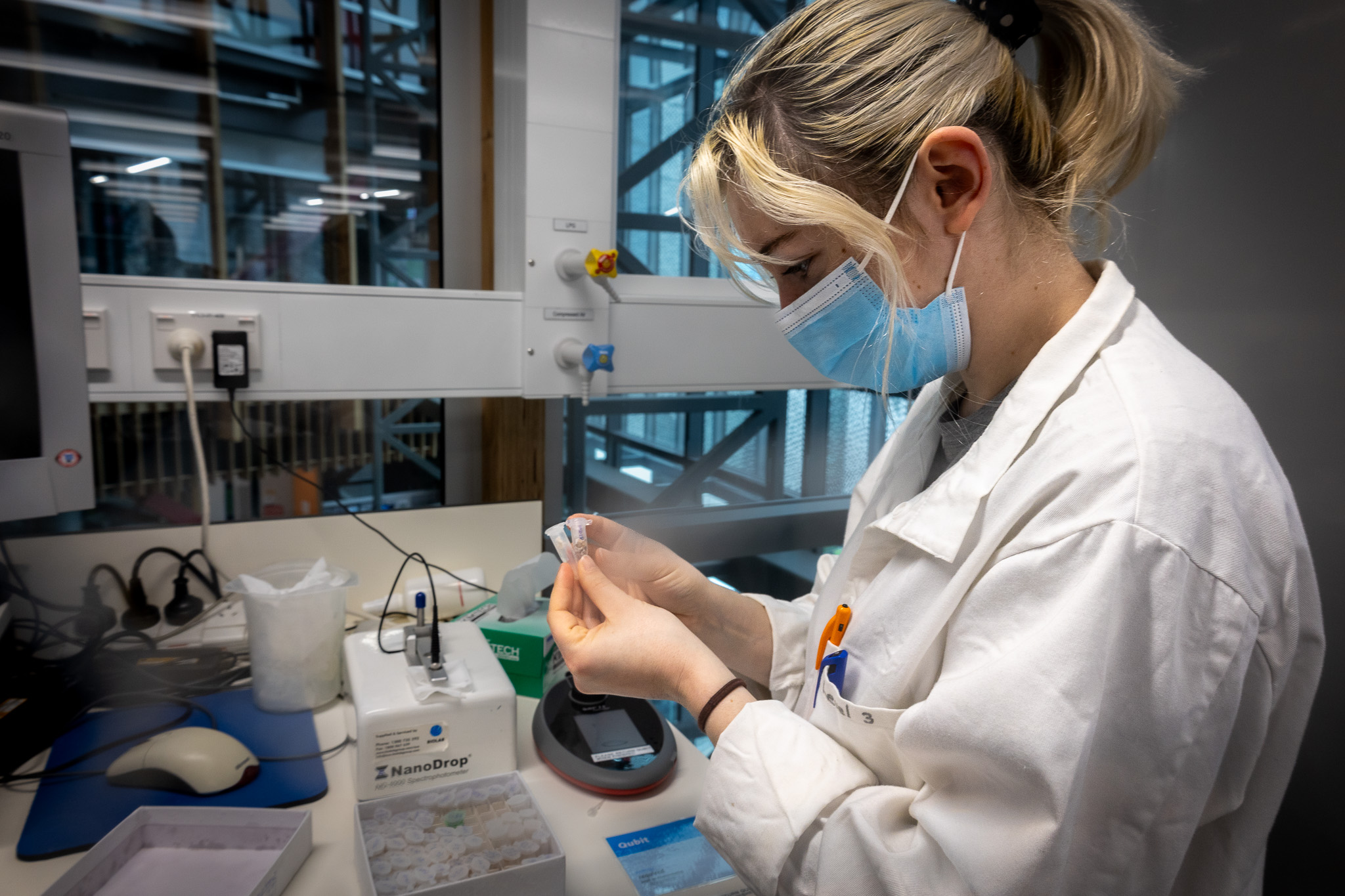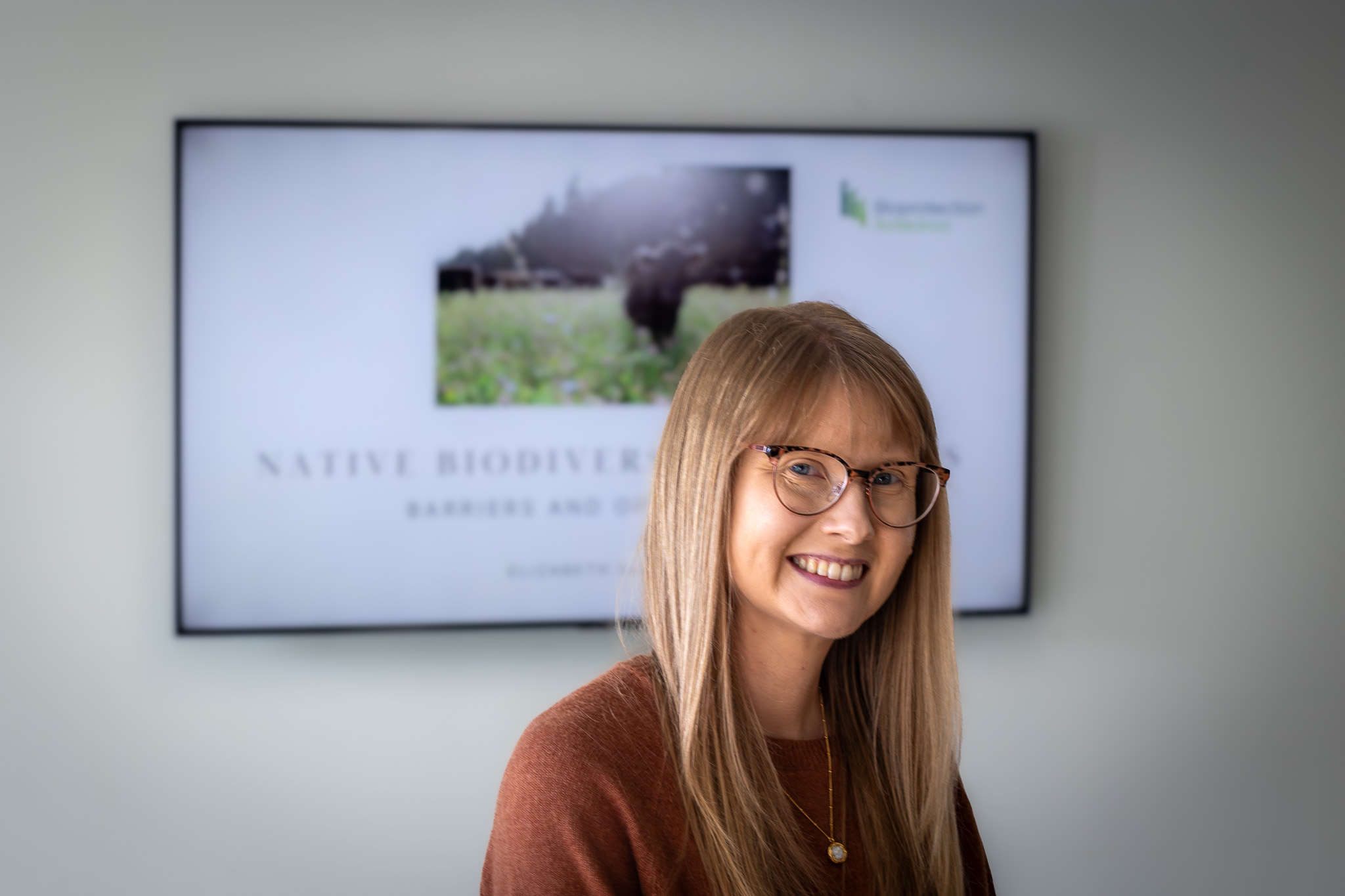
Postdoctoral Fellow Elizabeth Elliot Noe, researches the values and priorities of farmers in relation to biodiversity on farms
Farming is a critical lever in protecting biodiversity in Aotearoa New Zealand because over half of our land area is farmed, and much native biodiversity resides there. Protecting and enhancing this biodiversity largely relies on farmers voluntarily adopting biodiversity-supporting farming practices, making the value farmers place on biodiversity crucial.
Postdoctoral researcher Elizabeth Elliot Noe set out to explore farmers’ values and priorities by conducting interviews with 20 farmers in Waikato and Canterbury. Her goal was to understand the experiences, meanings, relationships, values, and priorities dairy farmers have for their land and the implications for native biodiversity on farms.
Over a chat at the kitchen table or in the milking shed, she asked the farmers to explain what aspects of native biodiversity were desirable or even possible on their farms. She then followed them out onto the farm to see examples of what they’ve done to protect biodiversity.
Elizabeth says she heard a range of perspectives, but overall, most dairy farmers she spoke with didn’t see a connection between biodiversity and the productivity of their farm. However, many farmers did see ways biodiversity could help with other important aspects, such as aesthetics, shade, shelter, and animal welfare.
As a result, many of the farmers were open to protecting biodiversity in areas that aren’t productive, such as on slopes and in wet areas. They were, however, almost unanimously opposed to using productive land for anything but agriculture.
Elizabeth acknowledges that farmers are not a homogenous group, and some value biodiversity more highly than others. She explains that the theory of value hierarchies recognises that we all have limited time and resources, so we put energy into the things that are most important to us.
Presenting her findings directly to the communities where her interviewees resided, Elizabeth’s talks were well-received. In attendance was lifestyle-block farmer and tree nurseryman Graeme Cairns from Hamilton, who was particularly surprised by the high proportion of native vegetation on pastoral land, far exceeding his expectations.

Graeme Cairns, lifestyle-block farmer and tree nurseryman
Mr Cairns says, “For an academic piece … the guts of it was quite insightful.” He felt the research could serve as an excellent resource for those looking to develop action plans to engage farmers who prioritise “every blade of grass lost is money out of my pocket.”
For some farmers, biodiversity simply isn’t a priority given the many other pressures they face. However, some farmers do value biodiversity more highly, and they are therefore willing to contribute time and resources to protect it.
Elizabeth’s study also highlights that whereas farmers once only had to worry about maximising productivity, they now must juggle many competing pressures and challenges. These include new policies, large amounts of paperwork, and negative public perceptions about the role of farming in water quality and climate change.
Elizabeth’s next step is to discuss these challenges with a wide range of dairy industry experts with diverse perspectives and expertise – including DairyNZ, Synlait, NIWA, and other policy experts. This work will highlight the many ways to think about dairy farming in Aotearoa New Zealand and outline the diverse approaches farming could take.
More Information
Dive into the details of Elizabeth’s research on biodiversity in agricultural environments here > Native biodiversity on dairy farms.


